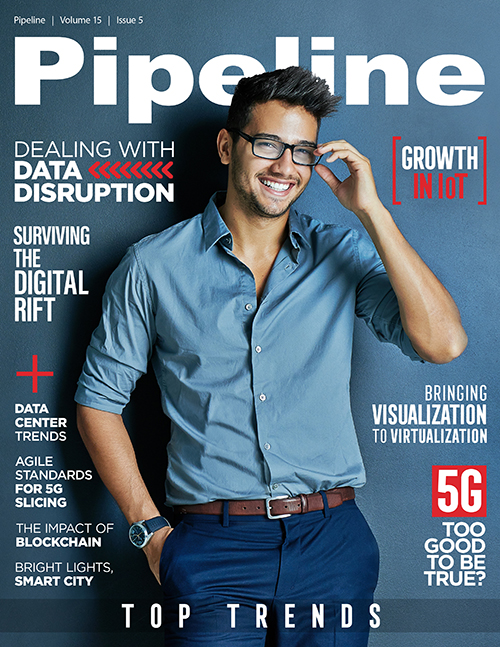How Enterprises Will Survive The Digital Shift
Many times, it is difficult to capture the current application portfolio, let alone figure out which applications are a good fit for the cloud. It’s important to take the time to analyze all enterprise applications to determine which would be good candidates, how they need to be positioned (shift vs. re-architecture vs. SaaS), clarify dependencies with other applications or data, and create the overall roadmap for migration. For example, you wouldn’t want to migrate an on-premise email solution. Additionally, you need to consider past barriers in terms of an application use. For example, now you can take advantage of the elastic nature of the public cloud to rapidly allocate and deallocate massively scalable resources to support business service on-demand, compared to building out your own infrastructure to support that one-time peak demand for the year.
Cloudifying Collaboration
Introducing elasticity to the way in which enterprises consume compute, network, and storage via public cloud adds tremendous value for proprietary applications. But in many cases there’s extraordinary value in shifting to SaaS, where worrying about the underlying infrastructure isn’t necessary. For the vast majority of enterprises, migrating to cloud-based collaboration tools is a quick and effective way to retool your company culture for a cloudy world.
Companies can utilize an intranet to foster collaboration among teams and departments with knowledge and content sharing, but it’s only as strong as the self-managed applications that run on it. To successfully collaborate, team members need quick and easy access to their project materials. The latest additions to Google Drive, for instance, help employees work more efficiently by providing the tools to find relevant content as fast as possible. It is actually estimated that by 2020, 80 percent of large and midsize organizations in mature regions will have deployed one or more content collaboration platform (CCP) products to implement a content productivity and collaboration strategy.
The ability to collaborate better has limitless benefits for the enterprise: from iterating on projects in real-time to bringing products to market faster. The amount of content being created within the enterprise every day is enormous. The ability to do so more efficiently and instantly across time zones allows employees to spend more time focused on what really matters.
Additionally, bringing video into the mainstream of an employee’s workday will make learning easier and more interesting, while also providing employees with the flexibility to access content whenever and wherever they are. Cloud-based collaboration tools ensure seamless video delivery that is typically beyond the capabilities of internal IT teams. Communicating via video is proven to be a more impactful and memorable method of sharing content, because our brains process video 60,000 times faster than text and with a much higher rate of comprehension.
Extracting Real Value from Data Analytics and Machine Learning
Traditional analytics environments excel at two things: examining what happened yesterday and delivering operational reporting. The reality is that these analytics are not helping companies to innovate and push into the future. Legacy applications lack predictive and machine learning capabilities. This architecture doesn’t contain all of the data necessary for machine learning to be accurate and impactful. Enabling on-premises machine learning infrastructure costs too much to warrant the benefit. Cloud native solutions offered by the leading providers, on the other hand, offer the average enterprise the ability to incorporate predictive analysis powered by machine learning into its arsenal. The concept of machine learning has been around since the late 1950s; however, the vast compute resources that the hyperscale public cloud providers maintain today finally enabled the discipline to be applied practically.
Planning around data shouldn’t focus on which data technologies are being implemented, but instead on which solutions are being enabled through those technologies. The companies that are most successful at leveraging machine learning are able to understand from the outset if the approach in question fits the situation at hand, if the data is ready, and, finally, if there is a requisite vision to maximize both results and opportunities. Doing so calls for a healthy dose of skepticism and a heaping serving of pragmatism to cut through the hype and get to the root of the opportunity. Undertaking a data assessment phase before diving into machine learning can:
- Save you from taking on a challenge that your data is not yet ready to support
- Speed up the process to begin machine learning projects in cases where the data can be enhanced
- Improve outcomes due to adherence to best practices
Too often, the original impetus for the machine learning project is altered or forgotten as the project progresses. As a project progresses, continue to revisit the motivating questions driving your efforts. Why are you spending time and energy to come up with these predictions? What is the ideal outcome for learning this information? How does your business improve from knowing this information? Integrating your model with a digital marketing campaign will help you drive business outcomes as part of your marketing strategy. Often the potential outcomes from machine learning exercises are not being maximized due to the failure to adopt the necessary vision to realize the full value.
Piecemeal or Wholesale?
It’s unlikely that a large enterprise could move everything that’s currently in place to the cloud. But it would also be a travesty if only net new applications migrated. Collaboration applications and machine learning should be deployed in the cloud posthaste. Regardless of the transformation timeline, it’s imperative that companies seek to rethink their culture, making themselves as agile as their cloud-based systems, in order to make the investment and disruption 100 percent effective.



















